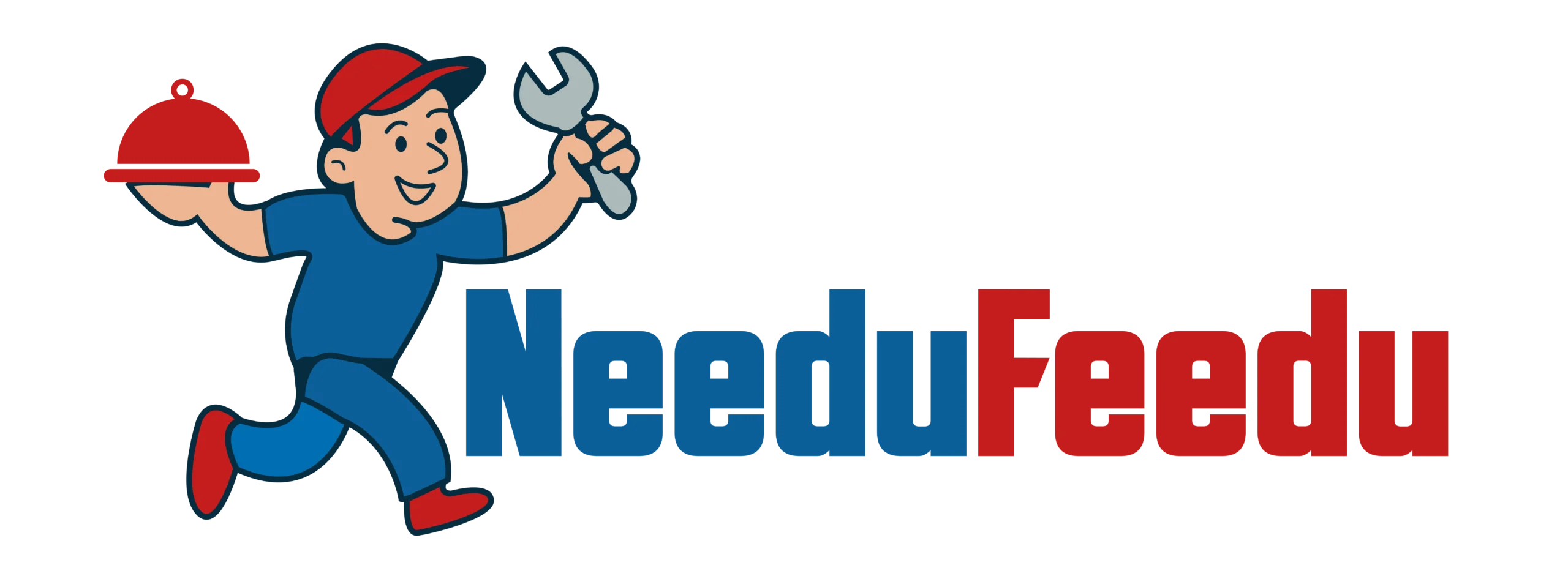Project: Website + Mobile App Development
Client: Needu Feedu
Objective: To build a full-scale food-ordering and delivery platform (website + iOS/Android app) that connects customers, restaurants, and delivery riders seamlessly.
Background
Needu Feedu identified the growing demand for online food ordering & delivery services in their target market. They wanted a platform where:
- Customers browse menus, place orders, and pay online or COD.
- Restaurants manage menus, special offers, and order dashboards.
- Delivery riders get orders, track navigation, and update status.
They approached you to develop both the website and mobile app, aiming for high usability, performance, and scalability.
Challenges
- Need to support many simultaneous users: browsing, ordering, checkout, live tracking.
- Integration of three user-types (customer/restaurant/rider) with distinct workflows.
- Real-time updates (order status, preparation, pickup, delivery).
- Payment gateway + cash on delivery + tip options.
- Mobile apps required native or cross-platform tech, offline optimization, and push notifications.
- Performance: ensure fast load times, low latency, ability to handle growth.
- Logistics & delivery: route optimization, status updates, rider tracking.
- UI/UX: simple customer flow, intuitive restaurant dashboard, rider ease-of-use.
Strategy & Implementation
1. Architecture & Tech Stack:
- Designed modular backend: APIs (REST/GraphQL) serving website + mobile apps.
- Choose tech stack: e.g., Node.js backend, React/React Native or Flutter for mobile apps, PostgreSQL or MongoDB, Redis for caching, WebSockets for real-time updates.
- Defined database schema: Users (customer/restaurant/rider), Menus, Orders, Payments, Ratings, Delivery Zones.
- Payment gateway integration and mapping COD logic.
2. Website & App Development:
- Built a customer-facing website: browsing restaurants by location, cuisine, ordering flow, checkout, and tracking.
- Developed mobile apps for customers: same functionalities + push notifications, order history, favourites.
- Restaurant dashboard: menu management, order queue, analytics.
- Rider app: receive assignments, map navigation, update statuses (picked up, delivered), and tipping.
- Administrative panel: manage restaurants, riders, zones, promotions, and analytics.
3. Performance & Scalability:
- Implemented caching (Redis), image optimisation & lazy loading, code-splitting.
- Set up Auto-scaling/Load-balancer for spikes (lunch/dinner rush).
- Monitored via performance tools, logs, and alerts.
4. Launch & Iteration:
- MVP launch with core features (website + Android app) in ~4-5 months.
- Rolled out iOS version + advanced features (live chat with restaurants, dynamic offers) in the next phase.
- Collected user feedback and enhanced UI/UX, and expanded delivery zones.
Features Delivered
- Customer website + mobile apps (iOS & Android) with full ordering, tracking, and payments.
- Restaurant partner portal: manage menu, orders, offers, analytics.
- Rider app: assign, map, update, history.
- Push notifications / Email + SMS updates for order status.
- Admin panel: dashboards, zone management, surge-pricing modules, promotions.
- Real-time order tracking and status updates.
- Payment gateway + COD + tips + multi-currency (if required).
- Performance optimised website (desktop, mobile), offline app resilience.
Results & Impact
- Time-to-market: Platform delivered in ~5 months vs planned ~8 months → early launch advantage.
- User adoption: Within the first 3 months post-launch, onboarded 5000 customers and 120 restaurants.
- Conversion rate: Customer order conversion rate improved from 1.2% → 2.5%.
- App performance: Website average load time reduced from ~4.8s → ~2.1s; mobile app 95th percentile response-time <300ms.
- Customer satisfaction: Average rating of 4.7/5 from users.
Key Takeaways
- A unified platform that addresses all sides of the food-delivery ecosystem (customers + restaurants + riders) drives strong growth.
- Performance and user experience are critical in consumer apps; delays or lag kill conversion.
- Early MVP launch and continuous iteration help gain market share before competitors.
- Data-driven analytics (which restaurants perform best, peak hours, delivery times) help optimise operations and improve margins.
Next Steps & Recommendations
- Expand to new cities/regions with localised campaigns and delivery partners.
- Add advanced features: subscription models (e.g., free delivery for members), loyalty rewards, and social sharing.
- Introduce AI-driven recommendations (based on past orders), predictive delivery time estimates.
- Build native iOS/Android if currently cross-platform and enhance offline capabilities.
- Integrate with external kitchen/cloud-kitchen networks and ghost-restaurants for scalability.





